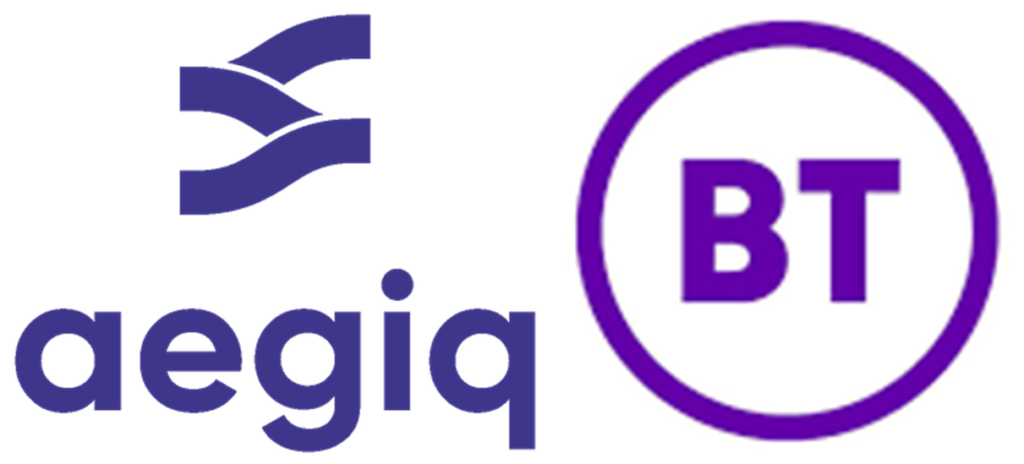By Joe Spencer
Aegiq and BT, along with other partners successfully demonstrated performance of their Quantum Link Assurance System (QLAS) at Adastral park in Suffolk, England. Funded through UK Research and Innovation (UKRI), the Quantum Link Assurance System solves an important operational obstacle for the commercial adoption of fibre-based QKD, by offering independent link validation. The solution is designed to seamlessly fit into standard optical fibre communications networks.
GQI attended the demo at Adastral Park to view the system and get a better understanding of the wider impact of this project.
What Is It?
First, it’s important to highlight that QLAS is not strictly a quantum technology, based on the definition of quantum 2.0. Nor is it a quantum communications system. QLAS utilises mathematical foundations of quantum communications, specifically the statistical covariance matrix, a formulation in CV-QKD to analyse a transmitted wave form injected to a fibre, and on the return, they measure the transmission of correlated light, as well as the uncorrelated light and state of polarisation. This allows QLAS to detect changes in the state of polarisation, or amplitude of light compared to the original wave form and determine if there has been any tampering, eaves-dropping or damage to fibres in optical communications systems. Not only that, it can also detect external interference and act as a passive sensor, so it has applications not only in the telecommunications domain but also in the security sector.
Why Does This Matter?
To BT, this demonstration shows the power of sensing and optics in telecommunications systems. For BT, this is now being implemented alongside BT’s Hydra team to collect data on system health, tampering but mainly in support of front-line engineers and services. This system can detect if a fibre has been bent, damaged, moved and allows BT to have a more resilient service through predictive maintenance. But there’s also revenue generation opportunities for BT, as this system is a passive sensor, it could also detect things of interest nearby cables, for example water leaks allowing BT to monetise this data in other service sectors.
The exciting thing about this technology is that it is ready to be integrated into classical systems as well as future quantum systems. Aegiq and BT see this as a stepping stone to getting end-users and customers comfortable and interested in the inevitable coming of quantum technology solutions.
For Aegiq, this demonstration shows near-term commercially viable technology utilising the knowledge and capability of photonics industry building quantum devices, and allows Aegiq to be present at the end-user community getting clients comfortable with the idea of quantum.
GQI Take
Aside from the technology, this demonstration is a testament to the focused delivery of use-cases supported by and funded by the UK Government. This project was the result of an 18 month SBRI grant and a few years before that of discussions between Aegiq and BT. To us, this highlights the power of use-case focused research and work, engaging with end-users to identify the problem space and implement quantum based, inspired or quantum-adjacent solutions.
Aegiq is principally a photonic quantum computing company, but the knowledge and expertise in PIC engineering, photonics and quantum has allowed them to deliver a new capability that can be interfaced directly with existing systems, both classical and quantum.
Whilst it’s true that quantum computing is the end-goal for a large majority of the sector, our quantum market model and analysis also shows there’s value to be had in the short term with the sensing and communications market. This can be seen in the figure below, showing our Quantum Market Model of total value (including both providers and end users) across 3 application pillars, communications, sensing and computing both top, middle and bottom respectively.
It’s also useful to highlight the shared technical foundations, intellectual property, and engineering challenges that cut across multiple domains of quantum technology. Breakthroughs made today in adjacent areas like quantum sensing and communications are not isolated wins, they lay critical groundwork for quantum computing. Many of the hurdles we face now are no longer rooted in fundamental physics, but in engineering and systems integration. Solving these in one domain contributes directly to progress in others. For instance, organisations like Aegiq, through targeted collaborations with partners such as BT, have shown how capabilities developed for one application pillar can translate into strategic advantages elsewhere. This cross-pollination of innovation is exactly what will drive scalable, real-world quantum computing in the near future.
April 21, 2025
